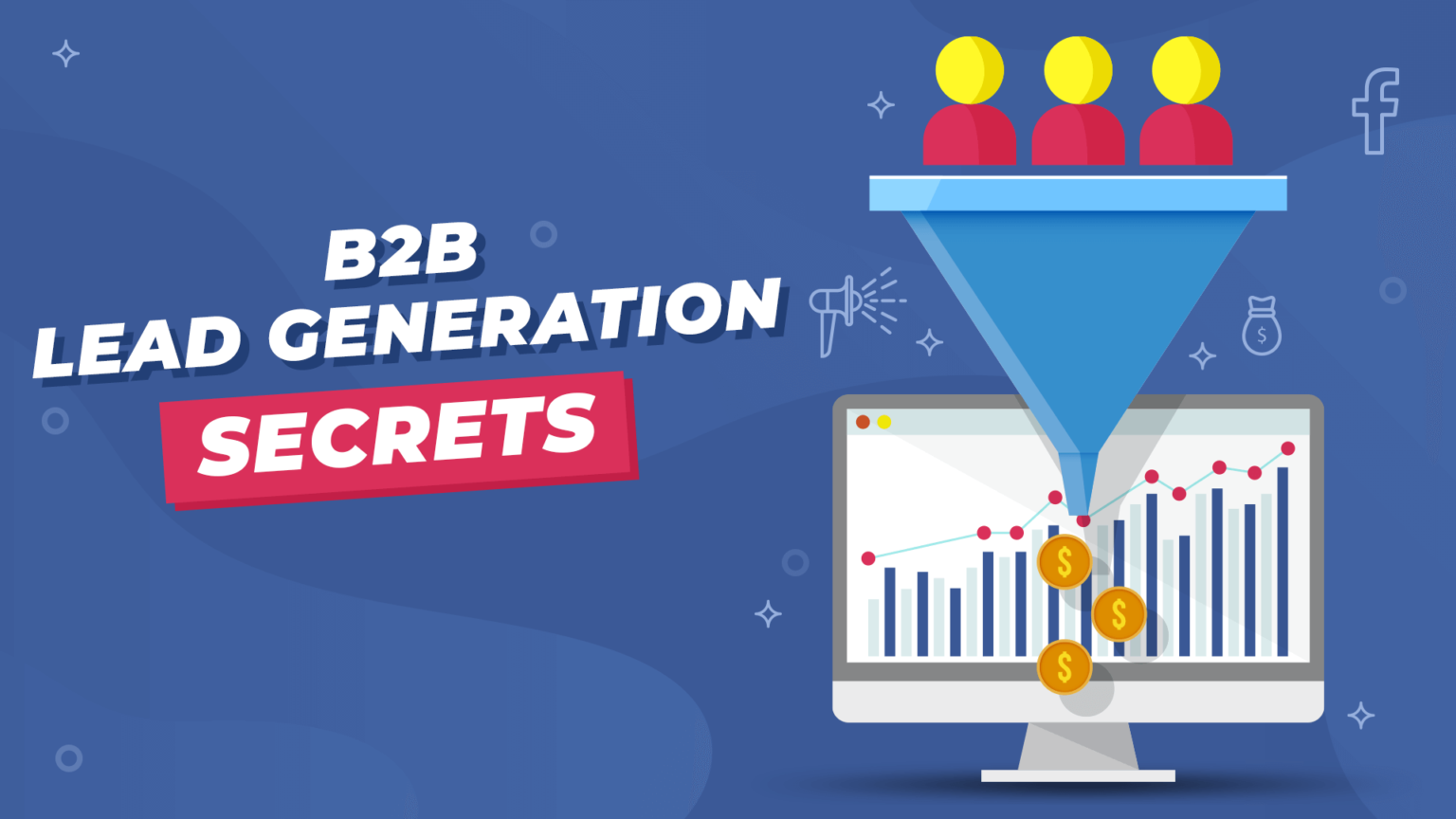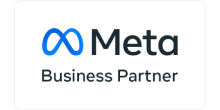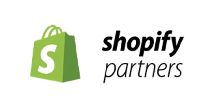Lead generation can be one of the most challenging parts of your business. Here are a couple of ways to get more leads and in turn, improve your conversion rates.
What is lead generation?
Lead generation is the process of collecting a lead, which is someone who has expressed an interest in what you are selling. Collecting a lead means they have provided some sort of contact information, such as an email address when they fill in a form on your website.
More leads = more people qualified as being a potential customer
What are conversion rates, and how can you improve them?
When talking about website conversion rate, this is the percentage of visitors that complete a goal you set out over the total number of visitors.
This can also apply to email marketing or social media marketing.
Improving your conversion rate means increasing that percentage, which involves getting more people to achieve your outlined goal.
Here are 5 tips for doing just that:
1. Build a buyer person
Always start with your audience. You need to know who they are, what makes them tick, and what problems they need to solve. Then, you’ll be able to provide them with the answers more easily.
Having a good understanding of your potential buyer means you can put the solution in front of them, speeding up the lead generation process, and getting higher quality leads from it.
To do this, build an ideal client profile or a buyer persona. This details who your audience is, what their challenges and goals are, and details their typical job role and experience level. A good way of going about this is by interviewing your existing ‘ideal’ customers.
By having a clear idea of your ideal client, you’ll be able to make your content more relevant, and therefore more useful to your potential leads. It also means that you’ll be able to identify quality leads more easily when you collect them.
This will improve conversion rates because the more accurately matched your lead is, the more likely they are to convert.
2. Make the process for collecting leads simpler
If the mechanism you use to collect leads is over-complicated, unattractive, or takes too long to load, you could be losing important contacts.
When using forms, find an online business survey or form tool that allows you to sleekly embed the lead capture into your website, or landing pages.
Forms don’t need to be boring or plain text. The example below shows how you can incorporate your branding and design into the form. This way your contact’s experience is enjoyable and smooth throughout your online channels.
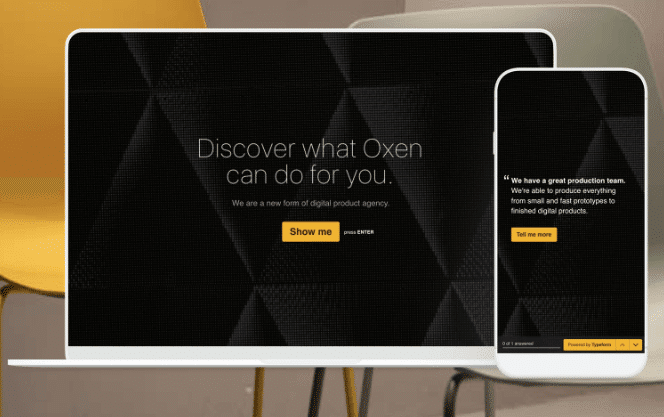
Source: https://www.typeform.com/templates/t/lead-generation/
What should you include in the form?
When asked “what registration or download form fields do you consider most essential vs nice to have?” 97% of B2B marketers said email address, 92% said name, and 79% said company.
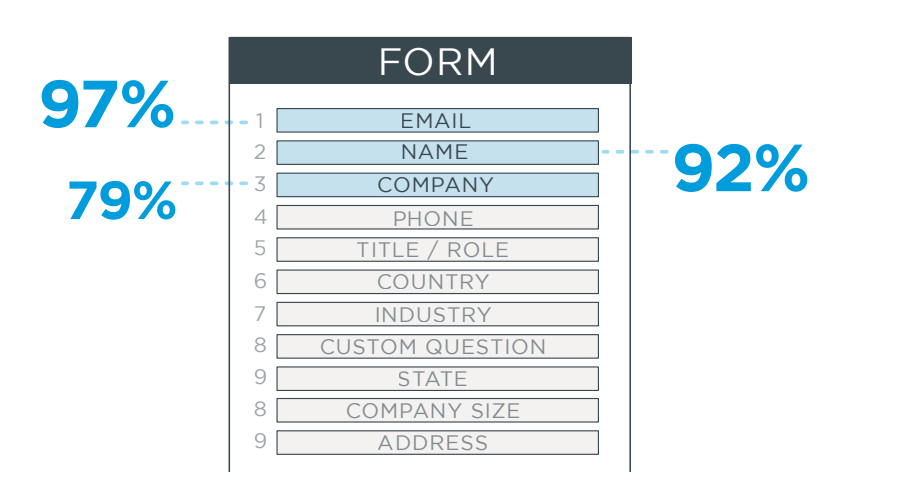
Source: http://go.brighttalk.com/rs/105-RTY-982/images/Holger_B2B_Lead_Gen_Report.pdf
If you are capturing a lead, finding a way to contact them is the crucial part. An email address along with a first name allows you to enroll them into your email marketing programs or reach out to them directly.
Whilst collecting more information may seem more useful, too many questions and you’ll put someone off. Aim for between 2 and 5.
3. Invest in good marketing tools
Good marketing platforms make your job easier. They allow you to sync information across all channels, such as social media, email marketing, and your website. You can usually integrate other apps in too, to keep all your data in one place, such as your event or webinar tools.
This allows you to track your lead’s activity across your channels to get a better understanding of their buyer journey and interests, making it easier for you to help them convert into a customer.
For example, there are automation tools that add new Typeform entries to HubSpot. This means you don’t have to worry about manually collecting the information. They will be automatically imported into your marketing lists, ready to be sent marketing emails or be contacted directly.
Email marketing
Email marketing is an important part of B2B marketing. It’s one of the easiest ways to connect with your leads and nurture them until they convert. Email automation is key so that you can send out bulk emails, or set up triggers when people fill in a form or download something.
When it comes to automated email marketing, effective bulk emails require a good email tool. To ensure a good deliverability rate, it’s important that you have the right email authentications set up. An email marketing tool will guide you through this otherwise complicated step. You’ll also benefit from a shared server, so you’ll have a good sender reputation from the start. Without this, you may struggle with high bounce rates or end up in the spam folder.
4. Focus on your content marketing
Events, social media and your website are important channels, however, studies tell us time and time again that content marketing is king.
In this study, whitepaper and eBook downloads are the biggest producers of leads (59%) followed by contact forms (39%) and webinars (37%).

Source: http://go.brighttalk.com/rs/105-RTY-982/images/Holger_B2B_Lead_Gen_Report.pdf
Your content marketing should focus on providing value. Go back to your buyer persona, and work out what they need help with understanding better or a challenge they need to overcome.
For many, gating your content is key for collecting leads. To encourage this, ensure your landing pages pull out the key benefits of the content and explain what your contact might hope to learn.
5. Don’t forget about video
It’s the future. In 2019, video overtook blogs and infographics as the number 1 marketing content used and it continues to rise.
With the average person currently watching 16 hours of online video per week, video is the newest way to get a lot of information across quickly, without losing your audience’s interest. The stats don’t lie:
80% of video marketers say video has directly helped increase sales
83% of video marketers say it has helped them generate leads
84% of people say that they’ve been convinced to buy a product or service by watching a brand’s video.
Source: https://www.wyzowl.com/video-marketing-statistics-2020/
Video marketing can take many forms, from animated explainer videos to webinar recordings to interview style ‘vox pops’.
For lead generation, a good tactic is to provide short explainer videos that focus on the benefits of your product or service. At the end of the video, include a form where people can leave their details for you to get in touch. Many video platforms incorporate this into their tool, such as Wistia.
Conclusion
The most important thing is having a good understanding of your potential buyers. If you don’t know who you are selling to, then you can’t provide them value and they won’t end up in your sales funnel.
This was a guest blog written by our awesome friends at Typeform!

